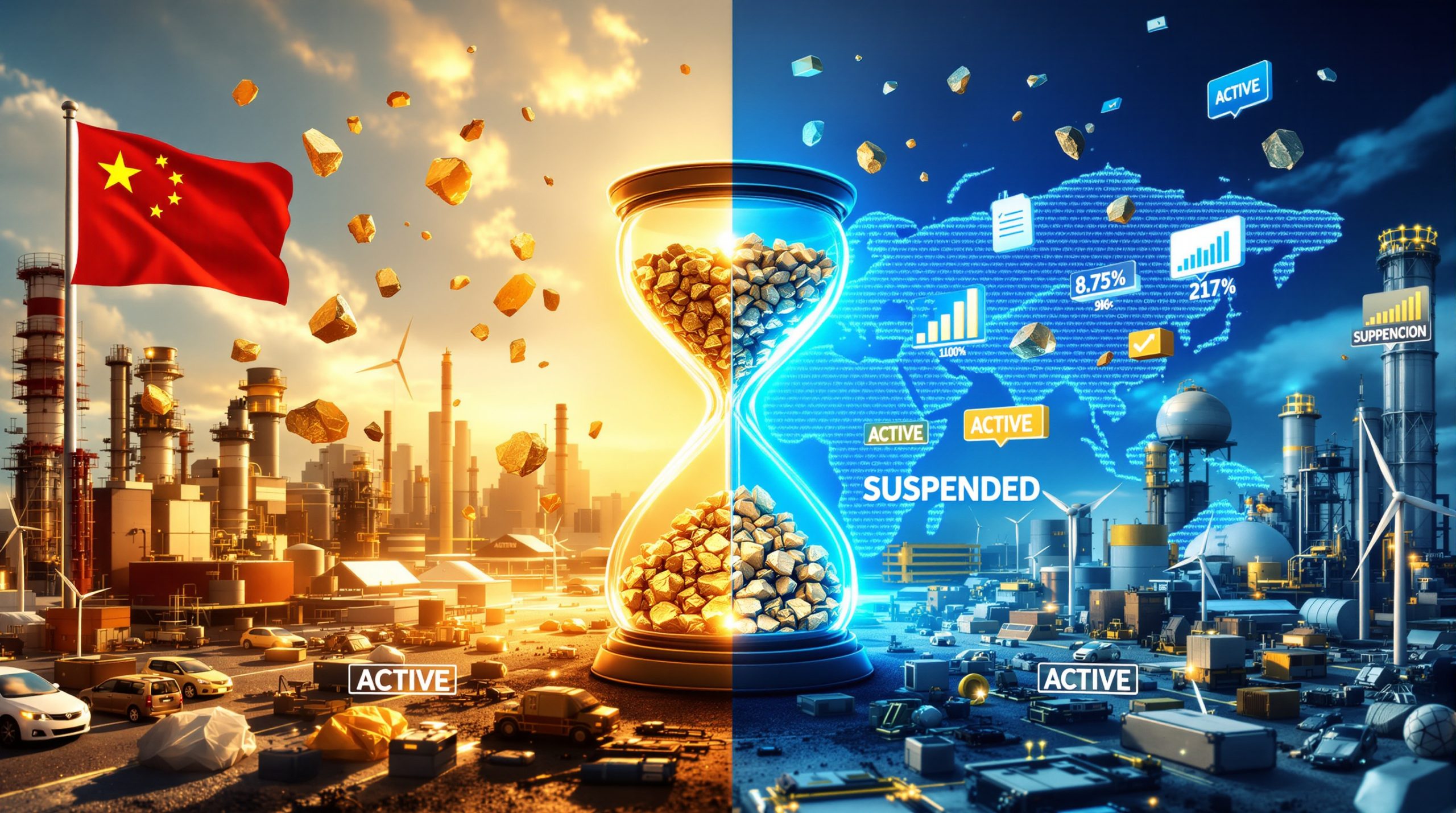What is Driving U.S. Interest in Congo's Mineral Resources?
The United States is increasingly turning its attention to the Democratic Republic of Congo (DRC) as a critical source of strategic minerals essential for modern technology and the green energy transition. This pivot comes at a time when global powers are jockeying for position in resource-rich regions, with implications for international trade, security, and economic development.
The Strategic Importance of Congo's Mineral Wealth
Congo sits atop some of the world's richest mineral deposits, containing approximately 70% of global cobalt reserves along with substantial lithium, uranium, and copper resources. These minerals form the backbone of technologies driving the modern economy and mining's paradoxical role in the clean energy transition.
Dr. Alain Mukeba, a Congolese geologist with the National Mining Research Institute, notes that "the mineral concentration in the Katanga Copper Belt represents one of the highest-grade copper-cobalt mineralizations globally, with some deposits yielding ore grades exceeding 3.5% copper and 0.3% cobalt—significantly higher than global averages."
These resources are particularly crucial for electric vehicle batteries, renewable energy storage systems, and advanced electronics. A single electric vehicle battery requires up to 30 pounds of cobalt, making Congo's reserves strategically irreplaceable in the clean energy transition.
Geopolitical Competition with China
The U.S. interest in Congo cannot be separated from broader geopolitical competition with China, which has established dominant positions in critical mineral supply chains over the past two decades. Chinese companies currently control an estimated 15 of the 19 cobalt mines operating in Congo.
"We're not just investing in minerals; we're investing in alternatives to the existing supply chain monopoly," stated Massad Boulos, senior adviser for Africa, during recent diplomatic meetings in Kinshasa. "American companies operate with transparency that benefits local communities in ways that others simply don't."
China's mining presence in Congo dates back to a 2008 infrastructure-for-minerals deal worth $6 billion, which granted Chinese companies significant extraction rights in exchange for building roads, hospitals, and other infrastructure—a model the U.S. now seeks to counter with its own approach.
What Specific Minerals is the U.S. Targeting in Congo?
Critical Minerals in High Demand
The U.S. investment strategy focuses primarily on four key minerals that underpin both civilian and defense technologies:
Cobalt: Beyond its well-known application in EV batteries, cobalt is critical for superalloys used in jet engines and gas turbines. Congo's cobalt has unique metallurgical properties, including higher purity levels than competing sources, making it preferred for high-performance applications.
Lithium: While Congo's lithium reserves are less developed than its cobalt resources, recent geological surveys revealed substantial hard-rock spodumene deposits in North Kivu province with lithium oxide concentrations exceeding 1.5%—comparable to top-producing regions in Australia.
Uranium: Congo's uranium has historical significance—the uranium used in the Manhattan Project came from the Shinkolobwe mine in Katanga province. Current uranium deposits represent strategic assets for both energy security and defense applications.
Copper: As the world's most widely used industrial metal and essential for electrical conductivity, Congo's copper deposits feature among the highest grades globally, with some mines producing ore containing up to 8% copper—four times the global average grade.
Current Production and Reserve Statistics
Congo produced 130,000 tons of cobalt in 2023, representing nearly 74% of global output. Industry analysts project this could reach 250,000 tons annually by 2030 if infrastructure and security challenges are addressed.
Geophysical surveys conducted by the U.S. Geological Survey in conjunction with Congolese authorities have identified previously unmapped lithium deposits estimated at 5.5 million tons—potentially making Congo the world's third-largest lithium repository if fully developed.
How Much is the U.S. Planning to Invest in Congo?
Multi-Billion Dollar Investment Framework
The scale of planned U.S. investment reflects the strategic importance placed on securing these mineral supply chains. While exact figures remain confidential during ongoing negotiations, senior adviser Massad Boulos confirmed that "multi-billion-dollar investments" are being planned through a combination of public and private funding mechanisms.
Industry sources familiar with the negotiations suggest the total investment package could reach $8-12 billion over the next decade—comparable to China's cumulative investment in Congo's mining sector since 2008.
Investment banker Maria Cheng, specialising in resource development finance, explains: "The structure likely involves Export-Import Bank loan guarantees, Development Finance Corporation equity positions, and private capital mobilised through production off-take agreements—a complex arrangement designed to compete with China's state-backed financing model."
Transparent Business Operations
A key differentiator in the U.S. approach involves transparency and environmental, social, and governance (ESG) standards. American mining companies entering Congo will be required to adhere to the Extractive Industries Transparency Initiative (EITI) standards, publish all contracts, and implement community benefit agreements.
"Congo has experienced extractive relationships that haven't delivered equitable benefits," notes Congolese economic advisor Pascal Tumba. "The American model emphasises technology transfer and local content development that could finally break the resource curse cycle if implemented faithfully."
What is the "Minerals-for-Security" Deal?
Origins of the Proposal
The innovative "minerals-for-security" arrangement originated from Congolese Senator Jean-Pierre Mwamba, who approached U.S. officials with a proposal to leverage America's strategic interest in critical minerals to address Congo's persistent security challenges.
The concept builds on historical precedents where resource access has been exchanged for security guarantees, but with important modern adaptations focused on sovereignty and transparent governance.
According to diplomatic cables reviewed by regional analysts, the initial proposal outlined preferential mining rights for U.S. companies in exchange for security assistance targeting armed groups in eastern Congo—particularly those with foreign backing.
Security Components
The security aspect of the arrangement focuses on ending the M23 rebellion, a conflict that has displaced over 1.7 million people in eastern Congo and disrupted mining operations across mineral-rich North Kivu province.
"We want a lasting peace that affirms the territorial integrity and sovereignty of the DRC," stated Boulos during recent meetings with President Felix Tshisekedi. "There can be no economic prosperity without security."
The security package reportedly includes advanced surveillance systems for border monitoring, military training programmes, and intelligence cooperation—though specific military hardware commitments remain classified.
How Does This Investment Connect to U.S. Trade Policy?
Timing with New Tariff Announcements
The timing of the Congo investment discussions, coming immediately after the U.S. announced a 10% baseline tariff on all imports, reveals a coordinated approach to resource security and trade policy.
Trade economists note that the tariff structure creates incentives for reshoring critical manufacturing while the Congo investment secures the raw materials needed for that manufacturing—a comprehensive strategy addressing both ends of the supply chain.
The tariff policy includes specific provisions for critical minerals imported for defense and clean energy applications, creating a regulatory framework that favours the development of the Congo resource partnership.
Domestic Manufacturing Implications
For U.S. manufacturers, the Congo partnership represents a potential solution to supply chain vulnerabilities exposed during recent global disruptions. Battery manufacturers and clean energy companies have identified raw material access as their primary constraint to expansion.
"Access to ethically-sourced cobalt and lithium is the bottleneck for scaling electric vehicle production," explains automotive industry consultant Robert Zhao. "The Congo partnership could help U.S. manufacturers increase domestic battery production capacity by 300% within five years."
What Challenges Face U.S. Investment in Congo?
Security Concerns in Eastern Congo
The M23 conflict represents the most immediate challenge to mineral development in eastern Congo. The rebel group has seized significant territory, including areas near key mining concessions, and continues to threaten transportation infrastructure needed for mineral export.
UN peacekeeping forces have proven ineffective at containing the violence, with over 2,500 civilian casualties reported in the past year alone. Any U.S. investment strategy must address this security reality while avoiding direct military involvement that could escalate regional tensions.
Competing with Established Chinese Presence
Chinese companies have established deep relationships throughout Congo's mining sector, controlling not just extraction but also crucial processing facilities and transportation infrastructure.
"The Chinese advantage goes beyond mining rights—they've built an integrated ecosystem from mine to market," explains regional economic analyst Ibrahim Osei. "U.S. companies will need to develop alternative logistics networks, processing facilities, and trading relationships from scratch."
Chinese companies also operate with fewer regulatory constraints and have established relationships with local power brokers that facilitate operational flexibility not available to Western firms bound by anti-corruption regulations.
Governance and Transparency Issues
Corruption remains endemic in Congo's mining sector, with an estimated $1.5 billion in mining revenues unaccounted for in government budgets annually. American companies operating under Foreign Corrupt Practices Act regulations face challenges navigating this environment.
Environmental concerns also loom large. Current mining operations have contaminated water sources with heavy metals and destroyed forest habitats across mining regions. U.S. investments will face pressure to implement higher environmental standards while remaining cost-competitive.
How Might This Partnership Impact Congo's Economy?
Local Economic Development
If structured properly, U.S. investment in Congo mineral resources could catalyse significant economic development beyond direct mining operations. Boulos emphasised that American investments "will stimulate local economies" through job creation, skills development, and infrastructure improvements.
Economic modelling suggests that for every direct mining job created, up to five additional jobs emerge in supporting industries and local services. With U.S. mining operations potentially employing 15,000-20,000 Congolese workers, the total employment impact could reach 100,000 jobs.
Diversification of Foreign Investment
The entry of U.S. companies creates competition that strengthens Congo's negotiating position with all foreign investors. This diversification could enable the DRC government to secure better terms, including higher royalty rates, local processing requirements, and stronger environmental protections.
"A mineral sector with multiple international partners creates a more balanced investment landscape where Congo can negotiate from strength rather than necessity," notes resource governance expert Claudine Mbala.
What Does This Mean for Global Mineral Supply Chains?
Reshaping Critical Mineral Markets
The U.S.-Congo partnership has potential to fundamentally reshape global mineral markets by breaking China's near-monopoly on critical mineral processing. Currently, China controls over 80% of cobalt refining capacity worldwide, even for cobalt mined elsewhere.
The partnership envisions new processing facilities either in Congo or in allied nations, potentially reducing refined cobalt prices by 15-20% through increased competition, according to commodity market analysts.
Competition for Processing Capacity
While securing mining rights represents an important first step, the real strategic value lies in controlling mineral processing—the conversion of raw ores into battery-grade materials.
"Mining is only the beginning—the value multiplication happens in processing and manufacturing," explains metallurgist Dr. Yanfei Liu. "The Congo partnership must include provisions for processing capacity development to truly secure the supply chain."
The U.S. is reportedly exploring options for building advanced processing facilities in Rwanda and Tanzania—countries with stable governance and proximity to Congo—to avoid the security risks of locating high-value infrastructure within current conflict zones.
FAQ: U.S. Investment in Congo's Mineral Resources
When did the U.S. announce its interest in Congo's minerals?
The U.S. stated last month that it was open to minerals partnerships with Congo after being approached by a Congolese senator with a minerals-for-security proposal. Formal negotiations began following high-level diplomatic meetings in Kinshasa in early April 2025.
Who is leading the U.S. initiative in Congo?
Senior adviser for Africa, Massad Boulos, is leading the discussions and recently met with Congo President Felix Tshisekedi in Kinshasa. A specialised interagency task force including representatives from the Departments of State, Defense, Commerce, and Energy supports the initiative.
What is the M23 conflict and how does it affect mining?
The M23 is a Rwanda-backed rebel group that has seized significant territory in eastern Congo, creating instability that threatens mining operations. The conflict has displaced approximately 1.7 million people and disrupted transportation routes essential for mineral exports from North Kivu province.
How does this investment relate to the new U.S. tariff policy?
The investment discussions come immediately after the U.S. announced a 10% baseline tariff on all imports, suggesting coordination between Trump's policies reshaping global commodity markets and resource security strategies. The tariff policy includes specific exemptions for critical minerals processed by U.S. companies or allies, creating economic incentives that support the Congo partnership.
Will U.S. companies replace Chinese mining operations?
Rather than immediate replacement, the initiative appears aimed at creating alternative supply chains and reducing China's dominance over time. The partnership focuses on developing new mining concessions and revolutionizing lithium production rather than taking over existing Chinese operations, establishing parallel supply chains that increase competition and market diversity.
Want to Catch the Next Major Mineral Discovery?
Stay ahead of the market with real-time alerts on significant ASX mineral discoveries, powered by Discovery Alert's proprietary Discovery IQ model. Explore how historic discoveries like those in the Congo have generated substantial returns by visiting Discovery Alert's dedicated discoveries page and start your 30-day free trial today.




